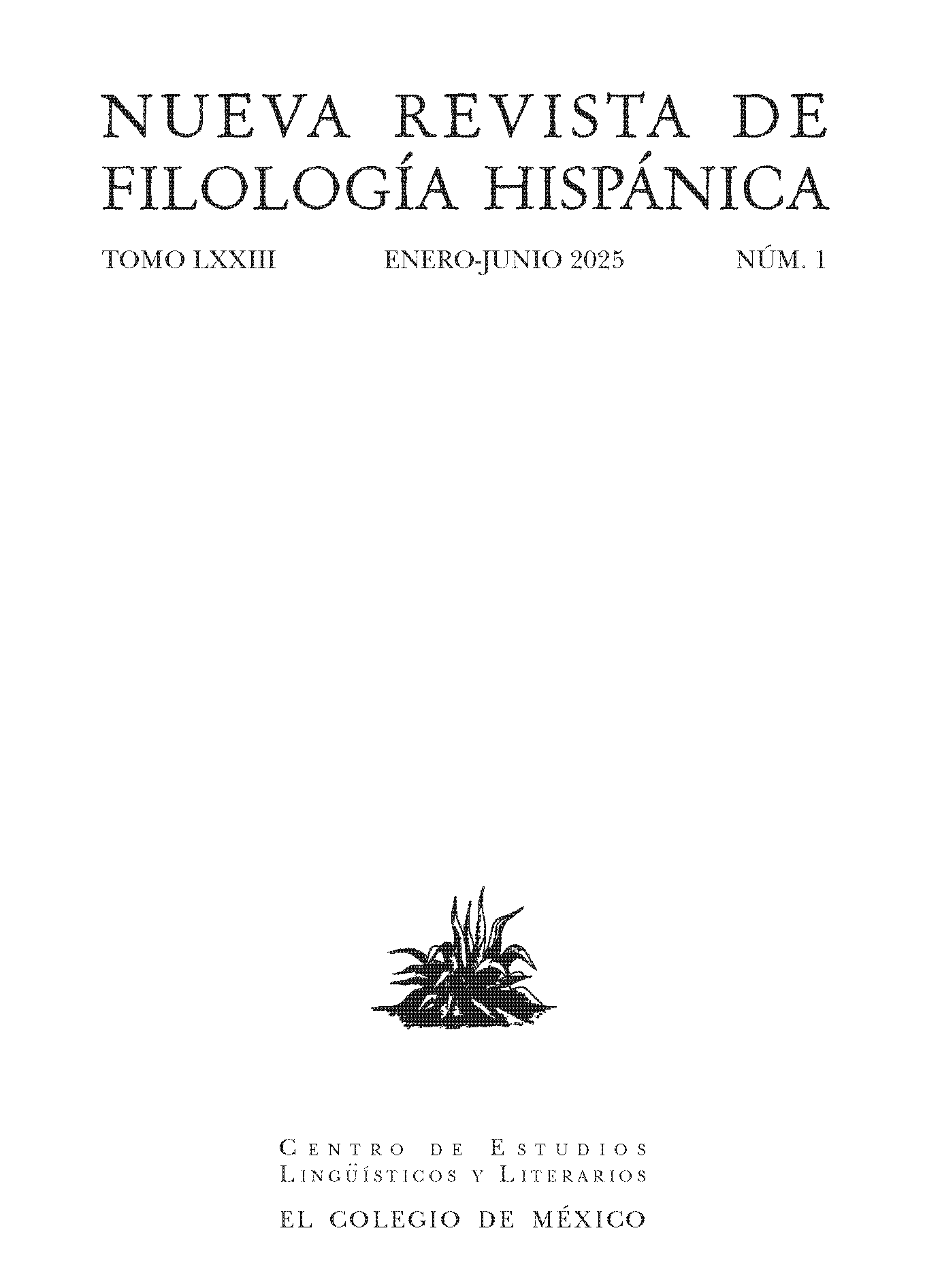La alternancia SVO/VO en la oración transitiva con sujeto y objeto nominales en español
DOI:
https://doi.org/10.24201/nrfh.v73i1.3975Palabras clave:
orden de constituyentes, sujeto, tópico, foco, estructura informativaResumen
Tradicionalmente se han planteado dos perspectivas a propósito del orden de constituyentes de la oración transitiva en español: para algunos es una lengua SVO, y para otros, en función de su mayor productividad, VO. El caso es que la distribución entre ambas estructuras alternantes no es arbitraria, sino mutuamente complementaria. Con base en ello, el objeto de este trabajo es mostrar que ambos tipos de oraciones están motivados por las nociones de tópico y referencia humana, y que su distinta productividad se determina por reglas de gramática directamente vinculadas con la estructuración discursiva del texto. Así, asumido un orden (S)VO, la oración SVO conlleva la activación del referente de S como tópico, hecho lo cual, la subsecuente oración u oraciones VO implican que la referencia de su sujeto tácito ya está activada y que, por lo tanto, la gramática de la lengua no requiere su realización fonética. No puede haber oración VO si el referente de su sujeto tácito no ha sido previamente activado.
Descargas
Publicado
Cómo citar
-
Resumen611
-
PDF392
-
LENS19
-
XML214
Número
Sección
Licencia

Esta obra está bajo una licencia internacional Creative Commons Atribución-NoComercial 4.0.
Nueva Revista de Filología Hispánica (1947-), volumen 67, N° 2, julio-diciembre 2019, es una publicación semestral editada por El Colegio de México, Carretera Picacho Ajusco 20, Ampliación Fuentes del Pedregal, Tlalpan, C.P. 14110, Ciudad de México, México, Tel. (55) 5449-3000, http://nrfh.colmex.mx/index.php/NRFH, nrfh@colmex.mx. Director: Pedro Martín Butragueño. Editores responsables: Alejandro Rivas y Jesús Jorge Valenzuela. Reserva de Derechos al Uso Exclusivo No. 04-2015-070112341900-203, ISSN (impreso): 0185-0121, ISSN (electrónico): 2448-6558, otorgados por el Instituto Nacional del Derecho de Autor. Composición tipográfica: El Atril Tipográfico. Responsable de la última actualización de este número: Perla Reyna Muñoz; fecha de última modificación: 19 de junio de 2019.
El contenido de los artículos publicados es responsabilidad de cada autor y no representa el punto de vista de El Colegio de México. Se autoriza cualquier reproducción parcial o total de los contenidos o imágenes de la publicación, incluido el almacenamiento electrónico, siempre y cuando sea sin fines de lucro o para usos estrictamente académicos, citando invariablemente la fuente sin alteración del contenido y dando los créditos autorales.










